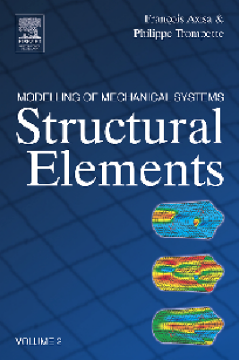
BOOK
Modelling of Mechanical Systems: Structural Elements
Francois Axisa | Philippe Trompette
(2005)
Additional Information
Book Details
Abstract
The modelling of mechanical systems provides engineers and students with the methods to model and understand mechanical systems by using both mathematical and computer-based tools. Written by an eminent authority in the field, this is the second of four volumes which provide engineers with a comprehensive resource on this cornerstone mechanical engineering subject.
Dealing with continuous systems, this book covers solid mechanics, beams, plates and shells. In a clear style and with a practical rather than theoretical approach, it shows how to model continuous systems in order to study vibration modes, motion and forces. Appendices give useful primers on aspects of the mathematics introduced in the book. Other volumes in the series cover discrete systems, fluid-structure interaction and flow-induced vibration.
* Axisa is a world authority in the modelling of systems
* Comprehensive coverage of mathematical techniques used to perform computer-based analytical studies and numerical simulations
* A key reference for mechanical engineers, researchers and graduate students in this cornerstone subject
Reviews of Volume One: Discrete Systems
‘For this is not just a translation; much has been added, refined and polished, to make this book an excellent addition to anyone’s bookshelf, whose interests lie in Dynamics, Vibrations, or Fluid Structure Interactions.’ Michael Païdoussis, Emeritus Professor in the Department of Mechanical Engineering, McGill University, Canada, in the Journal of Fluids and Structures, 2004
'I feel sure that this work by François Axisa will reward those who study it with new and unusual insights into the fascinating and notoriously difficult-to-master subject of predicting and controlling the vibration properties of the complex practical structures encountered across a wide range of engineering sectors.'
D.J. Ewins, Professor of Vibration Engineering in the Department of Mechanical Engineering, Imperial College London, UK
